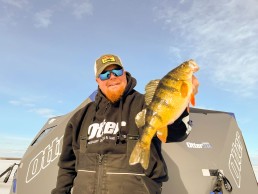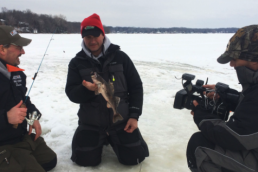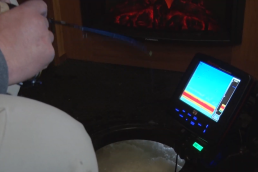The Age of First Ice
SHARE THIS POST
As some hunting seasons wind down, others are starting up. On the days when nothing is moving in the woods, avid anglers are looking at the frozen ponds, wondering why they’re sitting in a deer stand while there is ice. Even more agonizing: You could be hunting near water while witnessing first-ice fish being caught by someone else! Grouse, ducks and deer are exciting—but in a hardcore ice angler’s world, ice fishing wins the race!
Following the ice age
First ice can be some of the best ice fishing of the year. The age of ice in Minnesota varies from north to south. It can be 10 to 20 degrees warmer in southern Minnesota than northern Minnesota. The same applies to the Dakotas, Wisconsin and more. It’s all about latitude! The ice is obviously thicker and older in areas where the temperature is lower, and shallow lakes and bays freeze first.
Please follow ice safety instructions: Bring a tape measure, flotation, etc. If you are unsure, there are a wealth of ice safety tips online. Ice reports have become very popular and are widely viewed.
I enjoy checking ice around the state with my safety gear in hand. When I find four inches of clear ice, I follow it in hopes of reaching a fishable spot. There can be many fruitless lakes and journeys, but when I can get out to an ice fishing spot, it is a jackpot! It’s simply an extension of the fall bite under a sheet of ice! This makes the hard work and all the chiseled and drilled holes worth it.
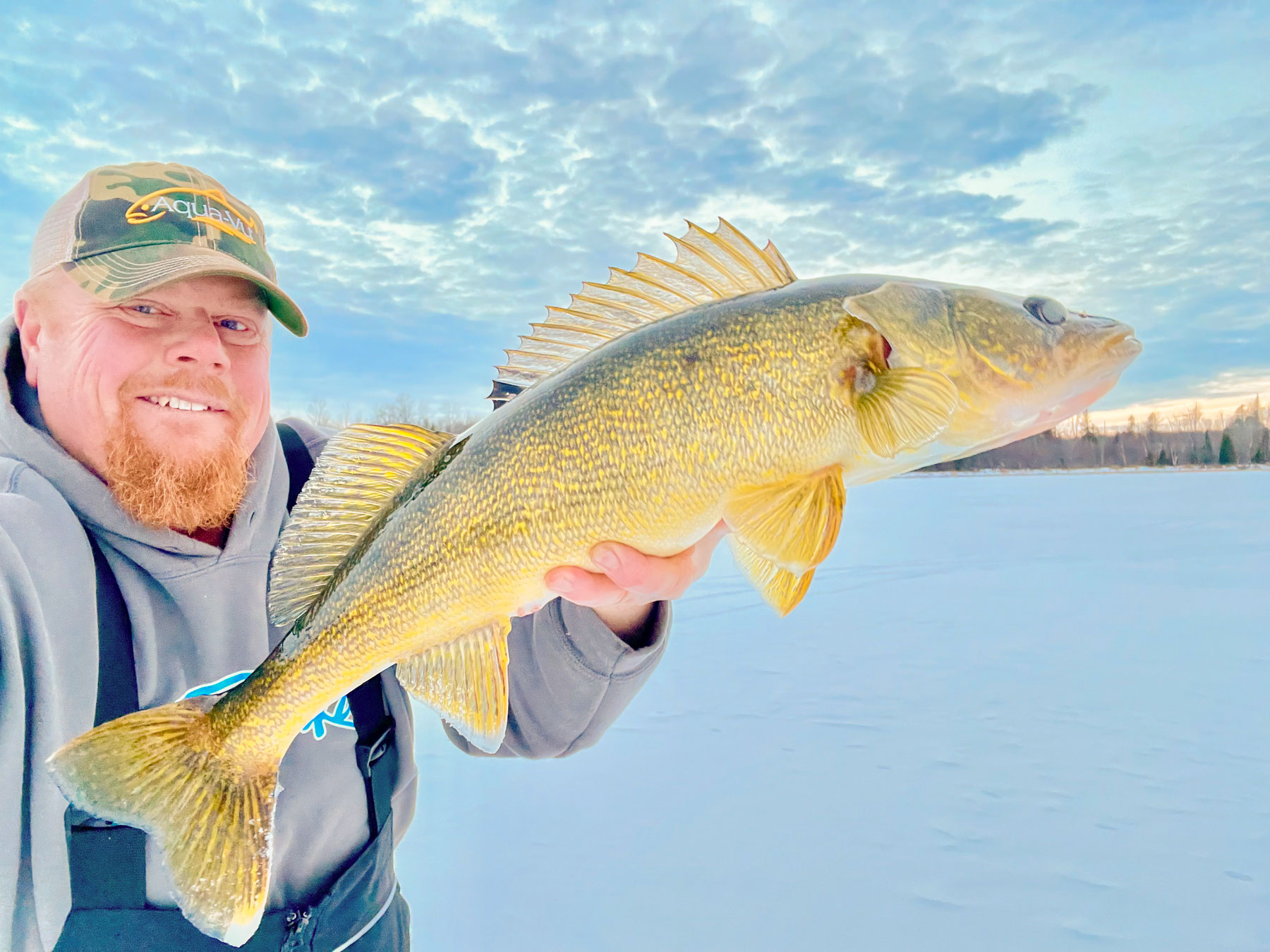
Catch what I want or catch what is biting?
When the ice is safe on Upper Red Lake, anglers don’t mind dragging out gear in Otter sleds because the walleye bite is great for all sizes of fish. The reward for the walk is a fresh meal of walleye at the end of the day. Windy days on Upper Red can push new ice around and completely open up the lake, so the freezing process has to restart.
Keep your mind open to other great bites that are available in your area. Since shallower lakes freeze first, I am more than happy to target what is available to catch on those bodies of water. I have enjoyed catching first-ice largemouth bass, northern pike, jumbo perch and some shallow-lake bluegills and crappies. As deep waters freeze, we can target walleyes.
There are a few tricky spots around the Midwest where anglers fish on small bays off main lakes, sloughs and oxbows, six feet from shore, and even between boat harbor docks. You don’t need a machine to access these areas. Early ice on foot is stealthy with minimal ice fishing gear. No machine or boat payment are necessary. This is one of the reasons why it’s one of the fastest-growing segments of fishing. It’s an affordable outdoor activity for the whole family.
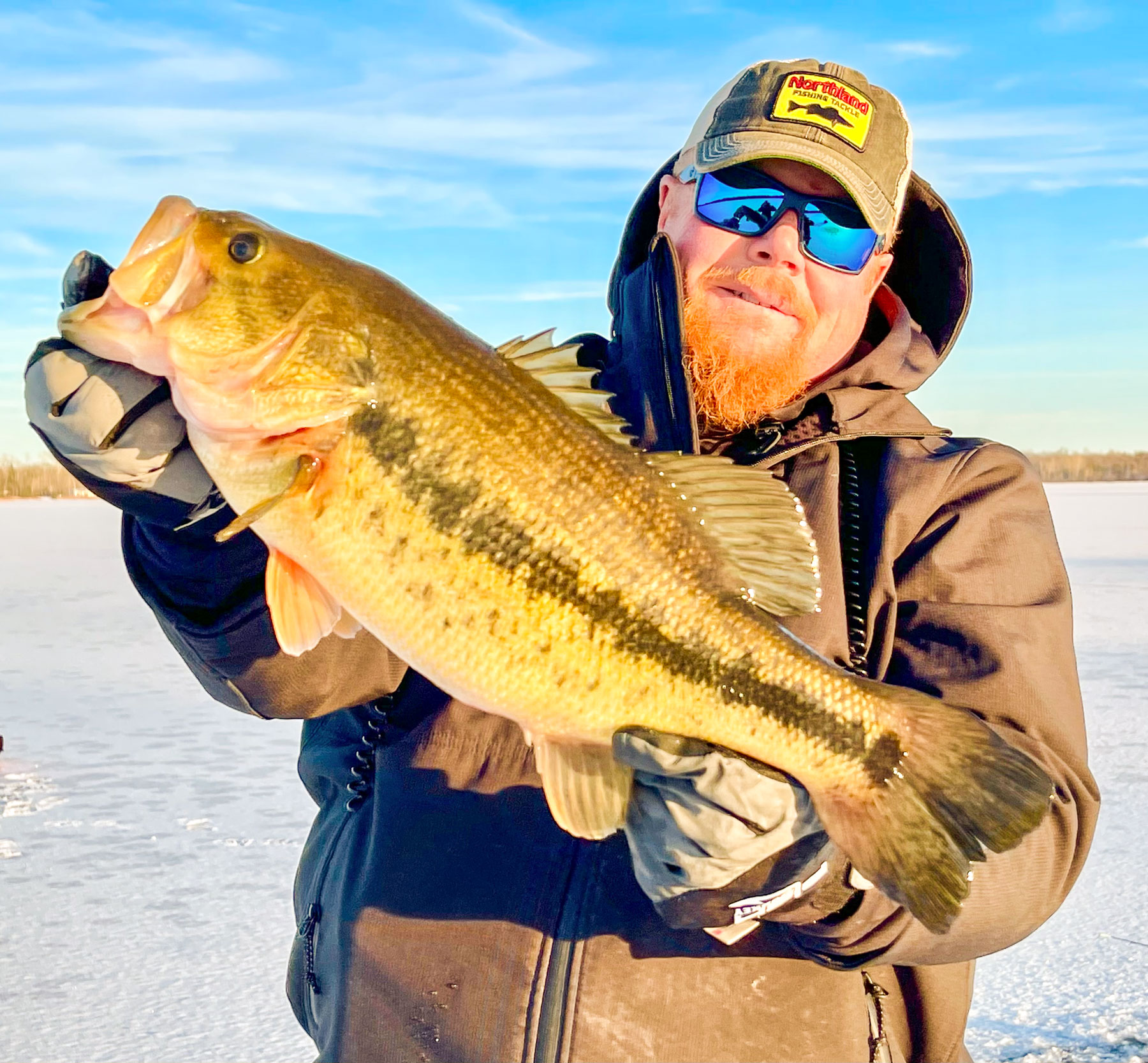
Are you enjoying this post?
You can be among the first to get the latest info on where to go, what to use and how to use it!
Early-ice necessities
Some of my early ice necessities include:
- An Otter utility sled.
- Humminbird MEGA Live ice bundle with the LakeMaster screen on. I can peek back at the screen as I’m pulling the sled out to my spot. Marked tracks on the Humminbird screen help you stay on the same ice you drilled and tested going in, even during white-out conditions.
- Amped Outdoors 12-volt, 32-amp hour lithium batteries run my Humminbirds all day long.
- Aqua-Vu camera.
- AFTCO fishing apparel.
- Fish Monkey Wooly gloves; I also have a pair of Yeti gloves for single digits or below.
- A couple of St. Croix Custom Ice Pan Dancers and Dead Eye rods for live bait rigging.
- iFish Pro tip-ups.
- An assortment of Gamakatsu Octopus-Style hooks in various colors and sizes.
- A couple of search bait rods rigged with Sunline Fluoro Ice.
- A pocket box with Northland Glass Buckshot Bro Bug spoons and Coffin spoons for big bites; Tungsten Mud Bug, Gill Getter, Flat Fry Jig, and of course Tungsten-rigged Mayfly, Larva and Mini Smelt for panfish/perch bites.
- RAZR Synthetic Lite auger on a brushless hammer drill.
- Two RAZR pucks—one stuffed with waxworms and maggots in the other.
- A small cooler with crappie and fathead minnows.
- An Otter Vortex Hub shelter fits in the middle of the sled.
This may sound like a lot, but it all fits, and the sled pulls with ease. There are times fishing early ice when it’s just nice to have a Vortex Hub set up on a spot that is consistent or has an evening bite. Insulated hub houses have come a long way, and most of the time, a heater isn’t even needed in the Otter Hub.
I set up my wife Heather like an armed fishing guard with MEGA Live and Aqua-Vu. As a less patient fisherman, I travel around RAZRing holes, looking for my next new favorite spot. To stay warm and keep sweating minimal, I wear an AFTCO Reaper Pullover Hoodie when I’m on the move. If Heather starts catching fish, I tiptoe back and enjoy the comfort fishing. As the evening bite fades, I go back to making my rounds, hole hopping.
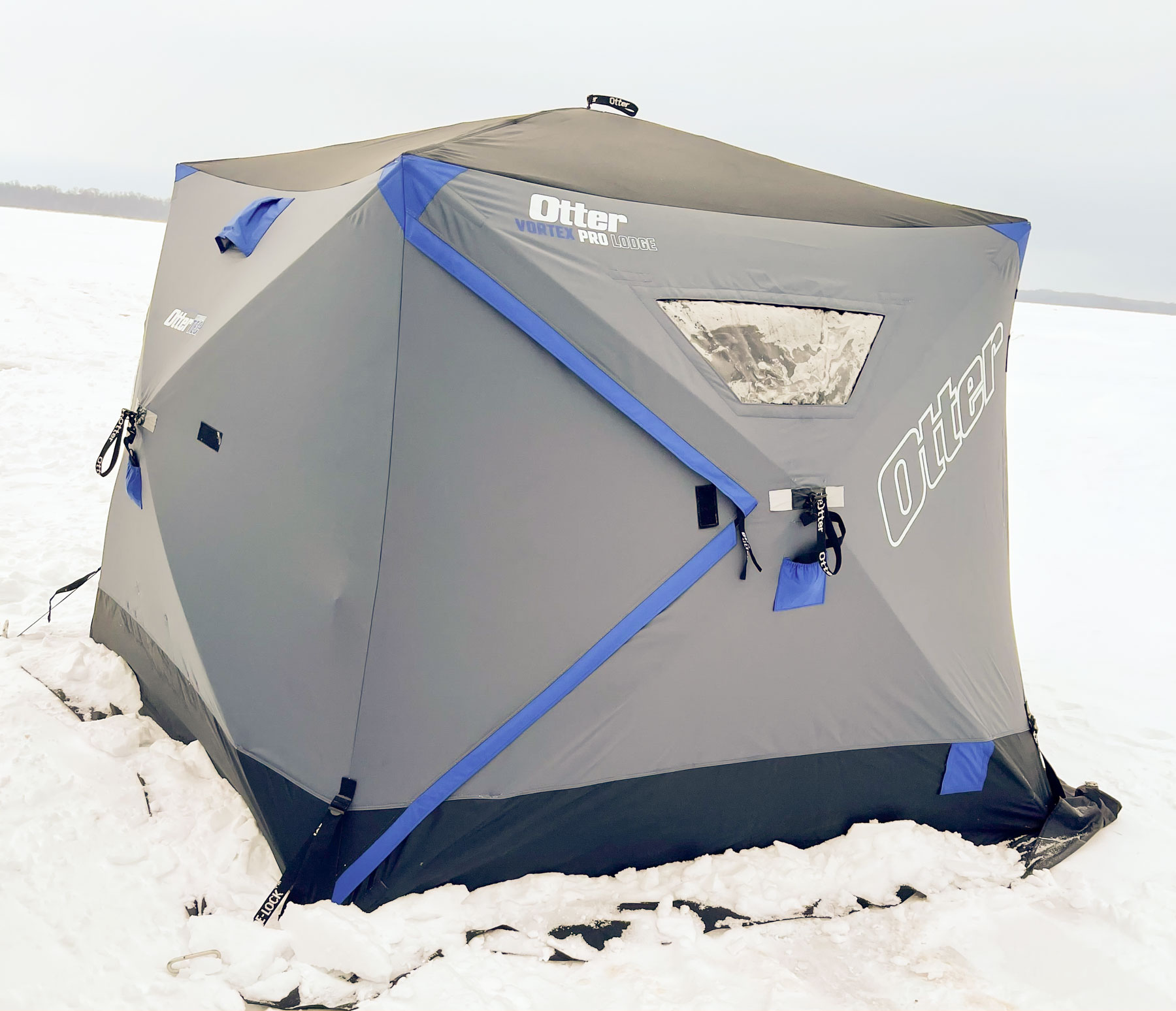
My new favorite spot
I have fished some legendary spots throughout Minnesota, surrounding states and Canada; however, you can be on the “best spot” or “favorite spot” at the wrong time. We have all heard, “You should have been here then!” or “You’re a little early.” All fish have reasons why they inhabit specific early-ice spots. Forage is number one, followed by cover. But sometimes, we can’t be there when they are actively feeding or schooled up.
Some areas, like weeds, rocks and moderate-depth basins, will load up with schools of crappies or bluegills. Other areas will have walleyes. If you are not finding fish, don’t just look to the middle or other side of the lake. You may have already walked past the fish on your way out.
For example, walleye fishing is often slow. No one is catching any on any spot. Then, three or four days later, everyone is catching walleyes on that same shoreline break. Then you find out that somebody hammered them on the inside of the drop, even inside the weeds, in 2 to 4 feet of water!
Similar to walleyes, panfish do not know they have to be. Another example: Crappie and panfish anglers may be set up in the usual first basin spot, punching hole after hole, and finding nothing but tiny perch and a few micro-crappies. They later find out the fish were hiding in dense weed mats that were frozen and hanging from the ice in shallow water.
There is nothing more fun than finding a school of fish where no one else is fishing. Wherever I find them is my new favorite spot!
MWO
SHARE THIS POST
Did you enjoy this post?
You can be among the first to get the latest info on where to go, what to use and how to use it!
Brian 'Bro' Brosdahl
Outdoor communicator Brian “Bro” Brosdahl lives in northern Minnesota. He is a walleye guide in the Cass Lake, Leech Lake and Lake Winnibigoshish areas. He is sponsored by Northland Fishing Tackle, Frabill/Plano, Aqua-Vu, Humminbird/Minn Kota, St. Croix Rods, Ranger Boats, and Evinrude. Guide inquiries: brosguideservice.com. Follow on social media.
